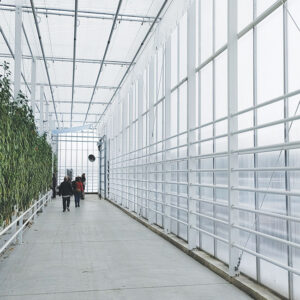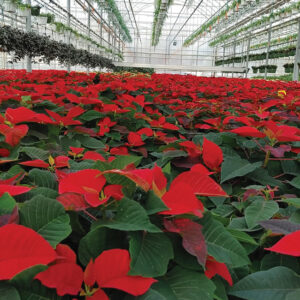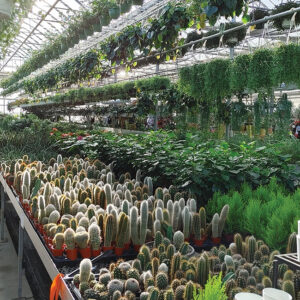
News
Energy saving technologies in greenhouses from a plant viewpoint
Part 1: Energy inputs and energy losses
December 29, 2022 By Dr. Mohyuddin Mirza
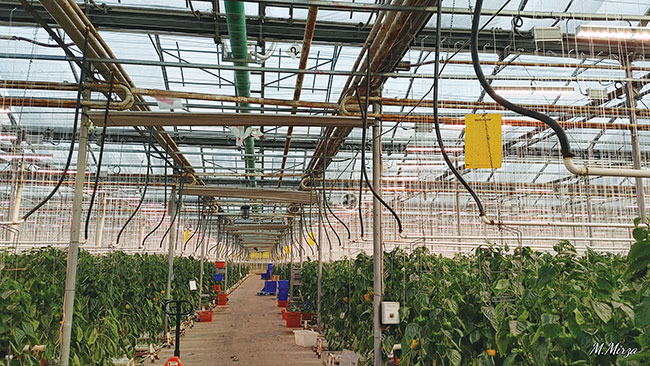 A greenhouse built in 2000 growing peppers and look at the “clutter,” which does affect light intensity reaching the plants.
A greenhouse built in 2000 growing peppers and look at the “clutter,” which does affect light intensity reaching the plants. Energy is the second largest operating cost for a commercial greenhouse in Canada. In case you are wondering what is the first one, that is the labour. In cold climates energy is used primarily for heating, lighting, dehumidification, CO2 supply and equipment operation. The relative proportions of costs for fuel and electricity will vary with cost of fuel, structures of greenhouses and crops grown. Understanding the use of energy in a greenhouse operation is the first step in reducing the energy costs.
With the current spike in energy costs, both electricity and natural gas, growers are becoming more conscious of their energy expenditures and taking different energy saving measures. This is not the first time such spikes in fuel supply have occurred and newer technologies are always coming out for managing energy.
The starting point
There are three broad, interrelated methods to reduce the impact of energy cost on revenue.
- Increase the crop yield and market value per dollar of energy cost.
- Reduce the energy required per square metre of greenhouse space.
- Switch to a lower cost fuel to supply some or all of your energy needs.
Reducing energy costs per dollar of saleable product is the overall objective and this requires having good data on yields/m2 if you are growing vegetables; or number of plants per m2 if growing bedding plants and ornamentals. When I ask growers what yields of cucumbers, tomatoes or peppers they have been getting, the answer is sometimes, “I have not calculated yet.” On the other hand, I know other growers who have excellent weekly data of yield and price. Remember, yield and price go hand in hand and that is called a sensitivity analysis to determine profitability.
Therefore, it is important to get an energy audit done as the initial step towards energy conservation and management. Most of the time energy auditors will look at fuel consumption, heat leakage through the structures, energy wastes and many other aspects. You should ask the auditors to look at your productivity per m2 of space as well in relation to energy use.
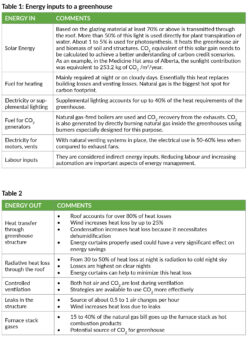 Table 1 summarizes the major energy inputs to a greenhouse. During daylight hours, the solar heat input is often more than required and ventilation is needed to reduce the temperatures. In Alberta, the annual solar energy input to a greenhouse is 4 to 6 Giga Joules/m2 with typical fuel energy use around 2 to 4 GJ/m2. Modern vegetable greenhouses use around 2GJ/m2 of energy while bedding plants and ornamental greenhouses use closer to 4GJ/m2/year.
Table 1 summarizes the major energy inputs to a greenhouse. During daylight hours, the solar heat input is often more than required and ventilation is needed to reduce the temperatures. In Alberta, the annual solar energy input to a greenhouse is 4 to 6 Giga Joules/m2 with typical fuel energy use around 2 to 4 GJ/m2. Modern vegetable greenhouses use around 2GJ/m2 of energy while bedding plants and ornamental greenhouses use closer to 4GJ/m2/year.
Table 2 summarizes major energy losses in a greenhouse. Ventilation to reduce temperature and/or to reduce humidity can be a major energy loss. Ventilation also increases consumption of natural gas to replace vented CO2.
Condensation on the inner roof reduces greenhouse humidity and ventilation required to reduce humidity. Moisture is removed from the greenhouse air and condenses on the cold roof and thus humidity decreases. The condensation can significantly increase heat losses through the roof. Part 2 will address methods for reducing energy costs.
Print this page
